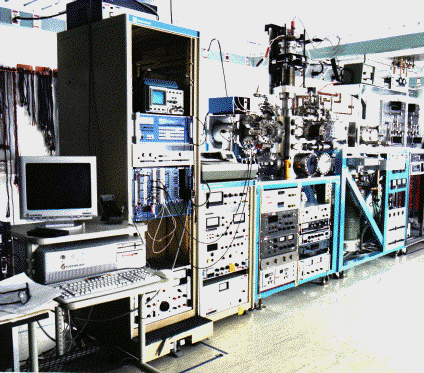
The EMSL is a national scientific user facility built by the United States Department of Energy (DOE) to tackle major environmental issues at the molecular level. Located at Pacific Northwest National Laboratory (PNNL) in Richland, Washington, the facility is adjacent to the Hanford Site, where cleanup of wastes from former nuclear production facilities is ongoing. Equipment and staff continue to be assembled in the state-of-the-art facility, named this year for the late Bill Wiley, former director of PNNL, whose vision led to its creation.
The facility will house the world's first 90-megahertz nuclear magnetic resonance spectrometer capable of research on health effects at the genome level; a 472 processor IBM SP parallel supercomputer for molecular modeling; a near-field optical microscope for observing chemical phenomena at the molecular level; a 12-Tesla mass spectrometer; as well as other advanced equipment.
Oxide Surface Chemistry
Many environmental problems involve reactions or processes that take place on mineral and oxide surfaces. The solid-solid, solid-liquid, and solid-gas interfaces between these materials and the environment are the areas where the important chemical and physical processes occur in the atmosphere, the soil, and during the processing of chemical waste. This detailed knowledge of the surface and interface properties of metal oxides, silicates, hydroxides, carbonates, and clays is often key to understanding and solving many of these issues. Compared with what is known at the atomic and molecular levels for metal and semiconductor surfaces, little is known about metal oxides, silicates, alumino-silicates, and other minerals. The complexity of the structures involved often makes them difficult to study both theoretically and experimentally.
The EMSL is the first DOE user facility built around a problem--the contamination of the environment. Discoveries made at the EMSL will no doubt also have broader impacts on health, chemistry, materials, and computer sciences. EMSL scientists will:
- Seek molecular-level understanding of the physical, chemical, and biological processes needed to solve environmental problems
- Advance a molecular science in support of long-term missions of the U.S. Department of Energy
- Create a collaboratory, where unique research capabilities are made available to the broader scientific community using both traditional collaborations and the latest communications technology
- Provide opportunities to educate and recruit the next generation of molecular scientists for tomorrow's challenges
The EMSL already has hundreds of collaborations set up with about 180 different institutions. As a facility for collaborative research in the environmental molecular sciences, the EMSL and its advanced research capabilities will be available to scientists from universities, federal laboratories, and industrial across the United States and around the world.

